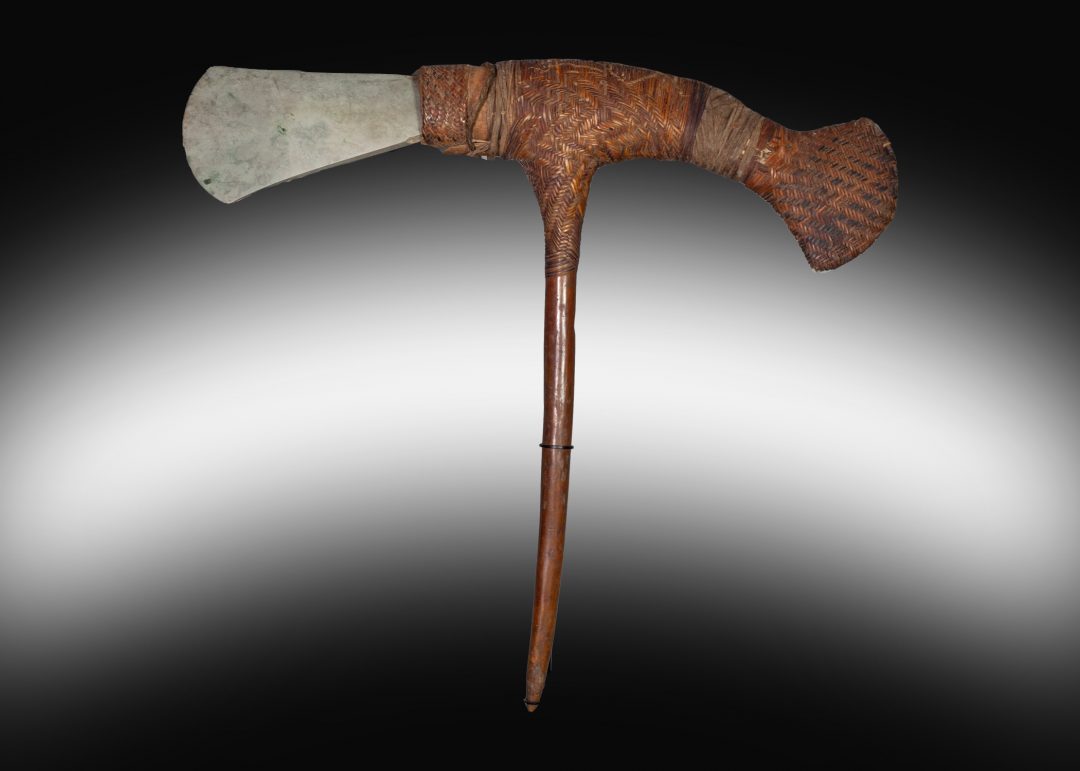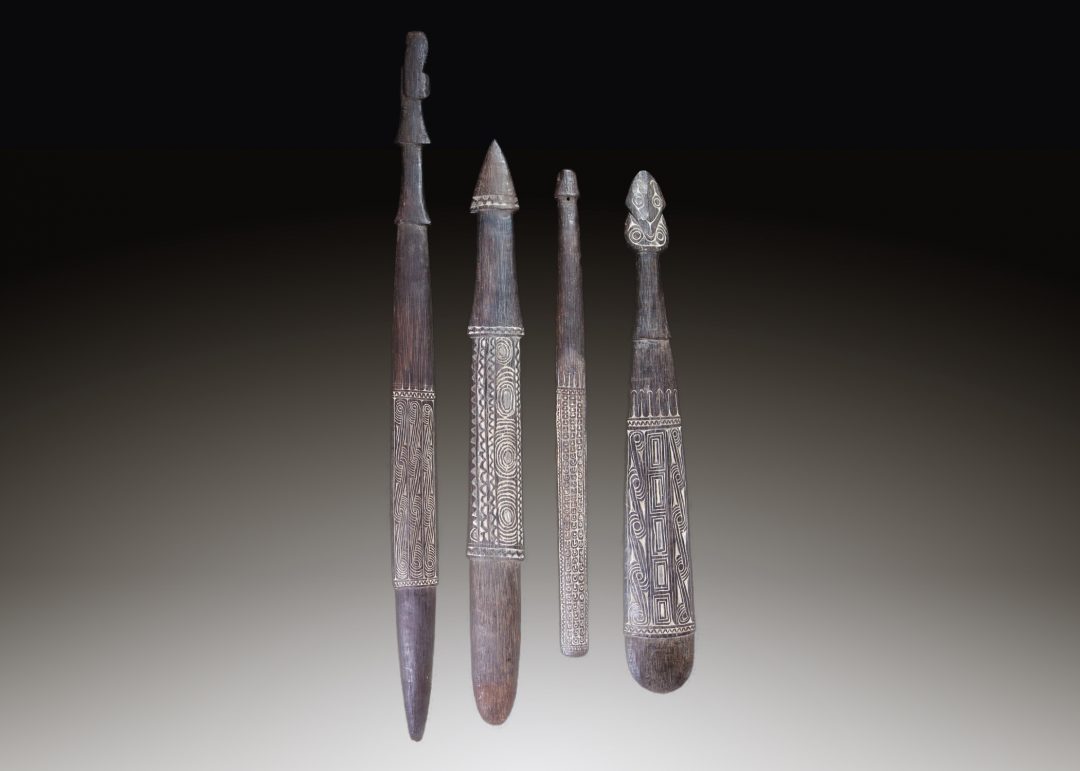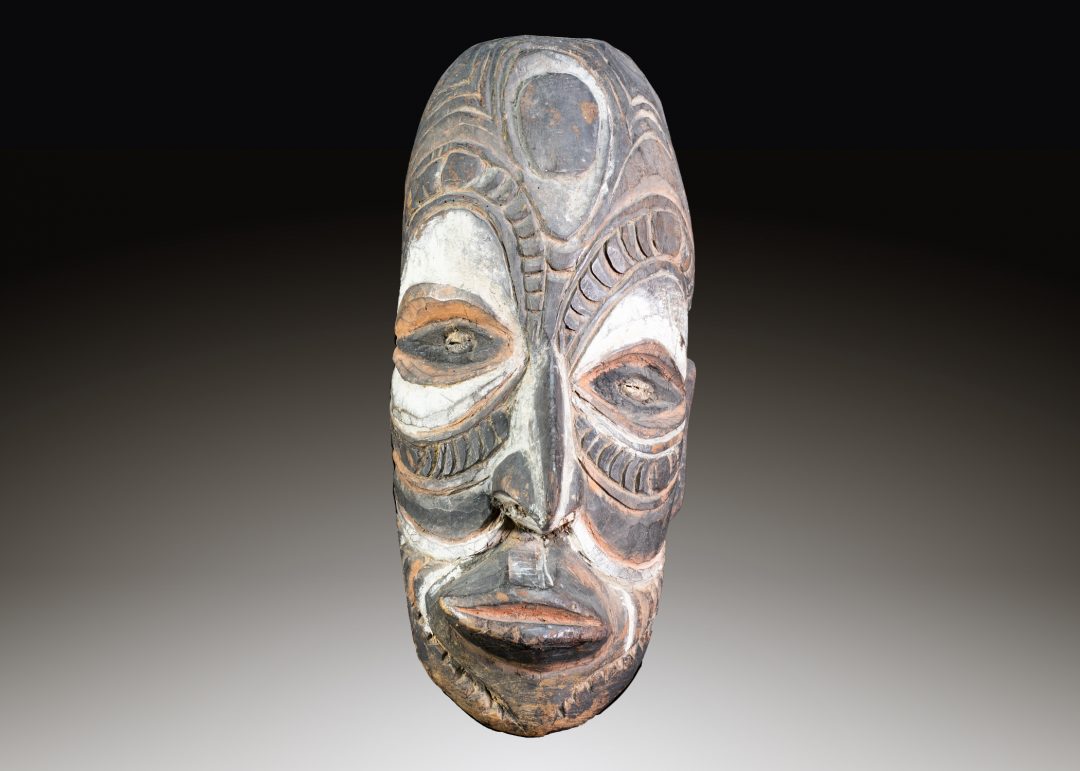Mid-20th Century Mask, Tolai People
-
TitleMid-20th Century Mask, Tolai People,
-
LocationEast New Britain Province, New Britain
-
Datemid 20th century
- Size22cm (W) x 26cm (H)
-
PricePrice on application
Collected by Loed Van Bussel, Holland
Dave De Roche, San Francisco
Todd Barlin, Sydney
The Elizabeth Pryce Collection, Sydney
This expressive and vividly painted mask was discovered in the Vunadavai Village by the well-known field collector Loed Van Bussel. They are worn by men during initiation ceremonies and cultural festivals.
The mask exudes a joyous, dreamlike brightness. In a light, cheerful palette of white, green, and blue, the face is depicted with a satisfied smile, and eyes that seem also to smile in their softly squinting shape and position. The face is reduced to its essential elements in a geometrically balanced series of triangles and arches, According to Heermann, .” (Heermann, Form, Colour, Inspiration: Oceanic Art from New Britain, Stuttgart, 2001). among the Tolai “wooden dance masks […were] called lor.
She continues (ibid.): “From the Tolai point of view, people, regardless of what their merits in life were, go on into another existence when they die, and become spirits (tambaran or tabaran) who ‘live eternally’. They are not conceived of as disembodied spirits or souls, as the name might suggest. On the contrary, they are thought of as having a physical, bodily existence in which they reproduce the social and cultural aspects of society on a different plane. The transfiguration of persons into higher spiritual beings can take place days before they die; the bodies they leave behind are regarded as empty shells. Spirits usually remain invisible to the living. They can, however, manifest themselves in various guises; for instance, as human beings or animals. Their existence is rendered visible in a ceremonial context with the aid of masks and dances.”
It’s interesting to note that by 1910, Tolai artists had responded to the demand by European collectors, to exploit their interest in masks and dance accessories to add to their income by selling carvings.
SOLD
A0
Collected by Loed Van Bussel, Holland
Dave De Roche, San Francisco
Todd Barlin, Sydney
The Elizabeth Pryce Collection, Sydney
This expressive and vividly painted mask was discovered in the Vunadavai Village by the well-known field collector Loed Van Bussel. They are worn by men during initiation ceremonies and cultural festivals.
The mask exudes a joyous, dreamlike brightness. In a light, cheerful palette of white, green, and blue, the face is depicted with a satisfied smile, and eyes that seem also to smile in their softly squinting shape and position. The face is reduced to its essential elements in a geometrically balanced series of triangles and arches, According to Heermann, .” (Heermann, Form, Colour, Inspiration: Oceanic Art from New Britain, Stuttgart, 2001). among the Tolai “wooden dance masks […were] called lor.
She continues (ibid.): “From the Tolai point of view, people, regardless of what their merits in life were, go on into another existence when they die, and become spirits (tambaran or tabaran) who ‘live eternally’. They are not conceived of as disembodied spirits or souls, as the name might suggest. On the contrary, they are thought of as having a physical, bodily existence in which they reproduce the social and cultural aspects of society on a different plane. The transfiguration of persons into higher spiritual beings can take place days before they die; the bodies they leave behind are regarded as empty shells. Spirits usually remain invisible to the living. They can, however, manifest themselves in various guises; for instance, as human beings or animals. Their existence is rendered visible in a ceremonial context with the aid of masks and dances.”
It’s interesting to note that by 1910, Tolai artists had responded to the demand by European collectors, to exploit their interest in masks and dance accessories to add to their income by selling carvings.
SOLD
A0













